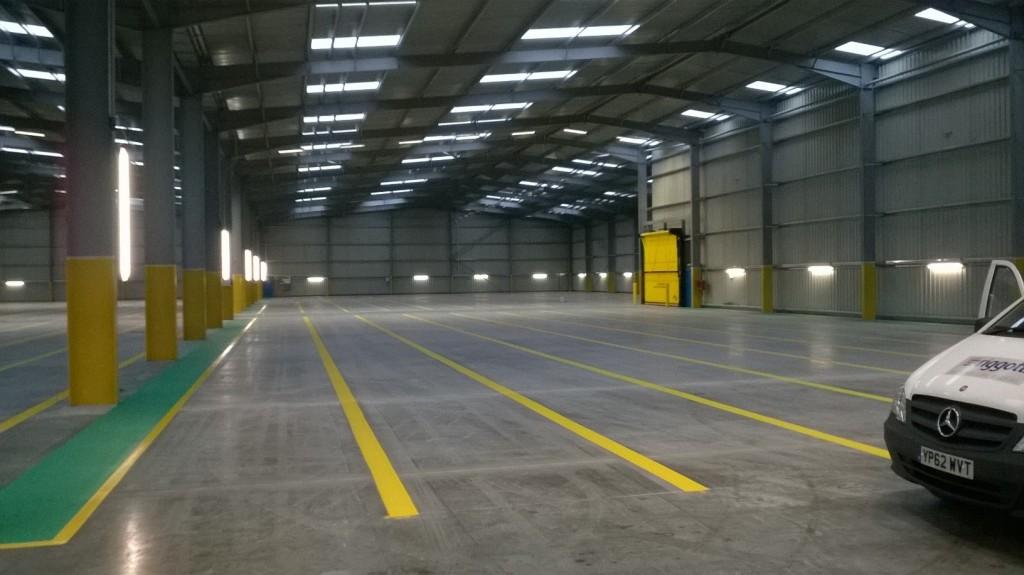Introduction:
Color coding is a powerful tool utilized in factory line marking to enhance organization, improve safety, and promote efficiency. By assigning specific colors to different areas, equipment, or materials, color coding provides clear visual cues that help employees navigate the workplace and adhere to safety protocols. This article explores the numerous benefits of color coding in Line marking factory and highlights its impact on safety, organization, and productivity.
Enhanced Safety:
Color coding significantly contributes to safety in factory environments. By using colors to designate specific areas or indicate potential hazards, employees can quickly identify potential risks and take appropriate precautions. Here's how color coding enhances safety:
a. Identification of Safety Zones: Color-coded lines can be used to mark safety zones, such as areas with restricted access or zones requiring personal protective equipment (PPE). For example, red lines may indicate high-risk areas or areas with potential danger, alerting employees to exercise caution and follow safety protocols.
b. Hazard Warning: Specific colors can be assigned to mark hazardous areas or equipment. For instance, yellow lines may be used to indicate caution areas near machinery or electrical panels, prompting employees to be aware of potential risks and take necessary precautions.
c. Emergency Response: Color coding can aid emergency response by designating evacuation routes, emergency exits, or emergency equipment locations. By assigning a specific color, such as green, to emergency exits, employees can easily identify and follow the designated paths during evacuation scenarios.
d. Clear Traffic Flow: Color-coded lanes for vehicle traffic and pedestrian walkways help maintain clear traffic flow and minimize the risk of accidents. For example, using blue lines for pedestrian walkways and yellow lines for vehicle lanes creates a visual distinction, reducing the likelihood of collisions between pedestrians and vehicles.
Improved Organization:
Color coding plays a vital role in improving organization within factory environments. By assigning colors to different areas, materials, or equipment, employees can easily identify and locate specific items, enhancing efficiency and productivity. Here's how color coding improves organization:
a. Inventory Management: Color coding can be used to categorize and differentiate materials or products. By assigning specific colors to different categories or product types, employees can quickly identify and locate the items they need, reducing search time and improving inventory management.
b. Tool and Equipment Identification: Color coding can be employed to identify and differentiate tools or equipment. For instance, using color-coded tags or markers on tools helps employees quickly identify the appropriate tool for a specific task, minimizing errors and promoting efficiency.
c. Process Identification: Color coding can be utilized to differentiate between different processes or stages of production. By assigning specific colors to each process, employees can easily identify where a product is in the production line, enhancing workflow coordination and ensuring smooth operations.
d. Batch or Lot Differentiation: In industries where multiple batches or lots are produced, color coding can help differentiate between them. Assigning specific colors to each batch or lot enables easy identification and tracking, reducing the risk of mixing or confusion during production or inventory management.
Visual Communication and Standardization:
Color coding provides a universal visual language that enhances communication and promotes standardization within the workplace. By assigning consistent colors to specific meanings, employees can quickly interpret information and follow established procedures. Here's how color coding improves visual communication and standardization:
a. Safety Signage and Labels: Color coding can be incorporated into safety signs and labels to provide immediate visual recognition of hazards or safety instructions. For example, using red for "Stop" signs or green for "Safety Equipment" labels ensures that employees understand the message at a glance, regardless of language barriers.
b. Standardized Procedures: Color coding can be integrated into standard operating procedures to improve efficiency and consistency. By assigning specific colors to each step or task, employees can easily identify the sequence and follow established protocols, reducing errors and improving overall productivity.
c. Training and Onboarding: Color coding simplifies training and onboarding processes by providing a visual aid for new employees. Color-coded systems make it easier to understand and remember specific rules, procedures, or safety guidelines, streamlining the learning curve for new hires.
d. Cross-Departmental Communication: Color coding facilitates communication between different departments or teams within the factory. For example, using distinct colors for lines or labels in each department helps employees recognize areas or materials specific to their own team, streamlining collaboration and minimizing confusion.
Efficiency and Productivity:
Color coding ultimately enhances efficiency and productivity within factory environments. By reducing time spent searching for items, increasing communication clarity, and improving safety protocols, color coding contributes to a streamlined workflow. Here's how color coding improves efficiency and productivity:
a. Quick Visual Recognition: Color coding enables employees to quickly recognize and process information, reducing the time required to locate or identify items. This saves valuable time, especially in fast-paced environments, ultimately increasing productivity.
b. Error Reduction: By clearly differentiating between different areas, materials, or processes, color coding minimizes the risk of errors or mix-ups. Employees can easily identify and select the correct items or follow the designated pathways, reducing rework and improving overall efficiency.
c. Streamlined Workflow: Color coding helps streamline workflow by providing clear visual cues and standardizing processes. Employees can easily identify their tasks, follow established procedures, and work collaboratively, resulting in a more efficient production line.
d. Training Efficiency: Color coding simplifies training processes by providing a visual reference. New employees can quickly understand and apply color-coded guidelines, reducing training time and accelerating their integration into the workforce.
Conclusion:
Color coding is a powerful tool in factory line marking that enhances safety, organization, and productivity. By assigning specific colors to different areas, materials, or equipment, color coding provides clear visual cues that improve safety protocols, facilitate organization, enhance communication, and streamline workflow. The benefits of color coding in factory line marking include enhanced safety awareness, improved organization, efficient inventory management, standardized procedures, and increased productivity. By leveraging the advantages of color coding, factories can create a safer, more organized, and highly productive work environment.

